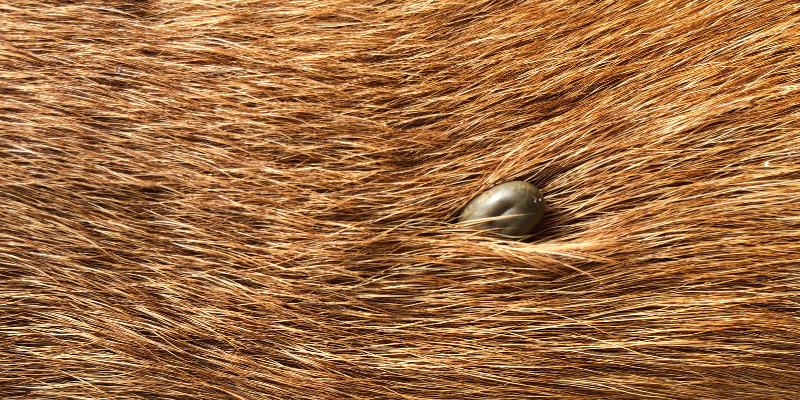 What are ticks?
What are ticks?
Ticks are blood sucking insects which live on ground covered with bushes, shrubs or long grass. From there they can easily transfer to passing hosts, such as sheep, deer, cats and dogs (or even humans). They have a large grey/brown egg shaped body and 6 to 8 small legs, their bodies become bigger as they feed on a host. Whilst traditionally March to September is though of as ‘tick season’, we have seen an increase in tick bites year round due to milder winters.
Why are ticks so bad for my pet?
Apart from being irritating to your pet, ticks are second only to mosquitoes in the spread of infectious diseases. When a tick feeds on an infected host, it will absorb some of the pathogen. When the tick feeds on the next host, it injects a small amount of saliva which can contain the pathogen, thereby transmitting the disease. This is why it’s so important to spot and remove a tick quickly.
What diseases can ticks spread?
Lyme disease
A chronic bacterial infection with lifelong problems; symptoms include depression, appetite loss, fever, lameness and swollen joints. Lyme Disease can be transmitted to humans if they are bitten by an infected tick.
Babesiosis
Found more commonly in southern England and Europe. This is a nasty disease of the red blood cells, spread by the bacteria Babesia. Symptoms include depression, pale gums, fever and swollen abdomen. May also include appetite loss, yellowish skin and coffee-coloured urine.
Ehrlichiosis
Not common in the UK but one to be aware of when travelling in Europe or the USA. Symptoms include fever, bleeding disorders, discharge from the mouth and nose, and swelling.
How do I check my pet for ticks?
It’s important to check your pet thoroughly after walks or time outside, particularly in areas of woodland or long grass. Pay particular attention to areas around the tail, around the eyelids, under the collar, under the front legs, between the back legs and between the toes.
How do I remove a tick?
Use a specialist tick remover (available from the practice). This tick remover is specially designed to slide under the body of the tick and be twisted to remove the tick entirely including the mouth parts buried in the skin. If these mouth parts are left behind they can lead to infection and irritation. If you are unsure of how to remove a tick, have a pet that needs another pair of hands or think you may have left some of the tick behind, contact your vet.
There are a few things you should NEVER do to remove a tick:
- Never use tweezers to remove a tick – this may not remove the tick completely.
- Do not crush or squeeze the tick whilst attached. This can cause them to regurgitate the blood back into your pet, along with any diseases the tick is carrying from their previous host.
- Never cover ticks in petroleum jelly – this is an old wives tale and won’t kill the tick!
- Never burn or freeze the tick off, it will not work and you may hurt your pet.
Humans can get ticks too, so a tick remover in your bag on every walk is a good idea!
How do I prevent ticks?
There are many different types of tick prevention medications available for cats and dogs, including tablets, spot-on treatments and collars. It is important to protect your pet year round from ticks and always use medication as directed.
Call us on 01435 864422 if you think your pet has a tick or would like more information about tick prevention.

